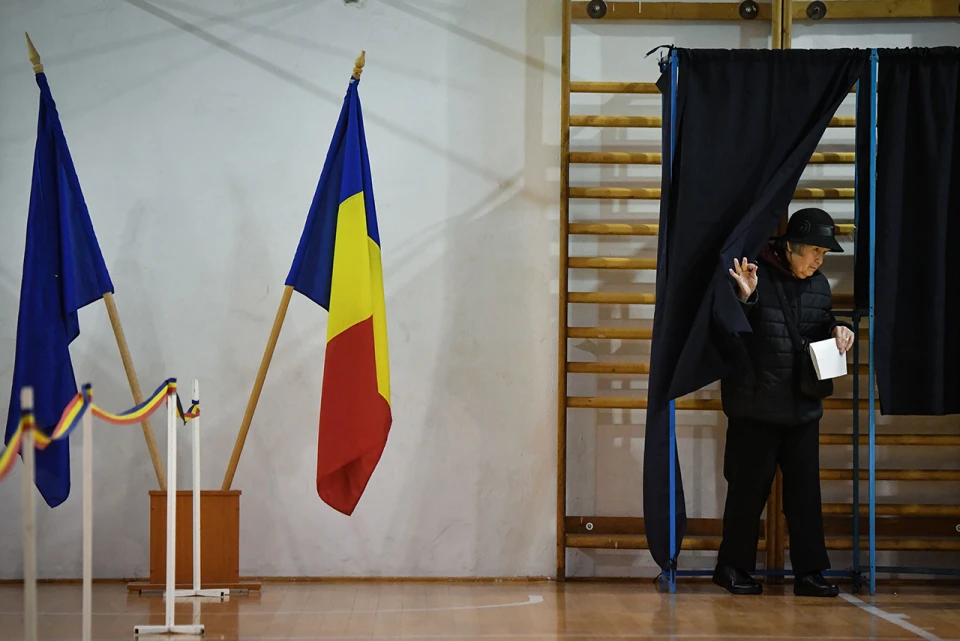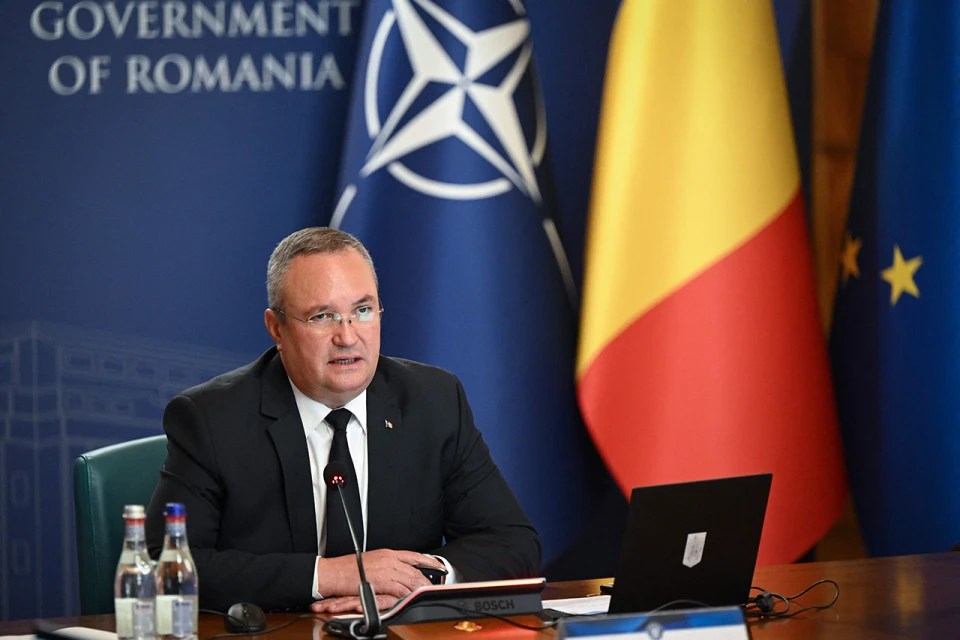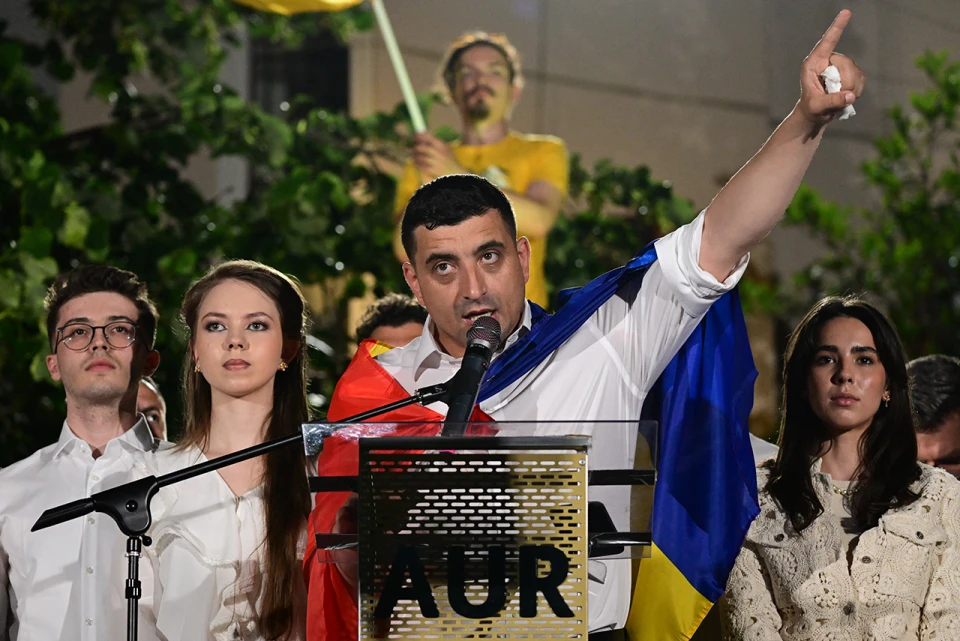
Romania's presidential election heats up: Battle for second place could decide everything
The election campaign in Romania is in full swing, and it’s proving just as intense as the recent one in Moldova. The first round of the presidential election is set for November 24, with parliamentary elections following on December 1 and a second presidential round on December 8
The presidential race kicks off the election marathon. While the frontrunner appears clear, if polling predictions hold, it's actually the runner-up who might shake Romania’s political landscape more than the winner. Why? Espreso dives into this and the defining trends in the final weeks leading up to the election.
Fourteen candidates are vying for the presidency: 10 backed by political parties and 4 independents. But all eyes are on five main contenders: the current Prime Minister Marcel Ciolacu from the Social Democratic Party (PSD); Senate President Nicolae Ciucă from the National Liberal Party (PNL); the populist right-wing AUR party leader Gheorghe Simion, suspected of ties to Russian intelligence; the Union for the Salvation of Romania (USR) candidate Elena Lasconi; and former NATO Deputy Secretary-General Mircea Geoană.
According to the latest polls from BCS and CIRA, Ciolacu is holding a strong lead (27.1% in BCS, 29% in CIRA), solidifying his top spot. Ciucă follows with 17% (BCS) and 19% (CIRA). Lasconi is polling third at 14.3% (BCS) and 16% (CIRA). Meanwhile, Simion, the radical right-wing candidate, is projected by CIRA to edge into third with 17% support, though BCS puts him lower at 11.9%. Geoană rounds out the top five, polling at 7.6% in BCS and 9% in CIRA.

Getty Images
In just two weeks, voters will head to the polls for the first round. Several key dynamics will shape this phase. Despite Ciolacu's advantage, as predicted by pollsters, the real fight is for second place.
The candidates vying for a spot in the second round include PNL's Nicolae Ciucă, the far-right AUR’s Gheorghe Simion, and center-right USR’s Elena Lasconi. Although Ciolacu seems poised for the lead, any of these three could join him in the runoff, keeping the race wide open.

Nicolae Ciucă, Getty Images
The Social Democratic Party, along with the National Liberal Party, has become a cornerstone in Romania's political framework. Marcel Ciolacu, the leader in recent polls, comes from this bloc. The outgoing political cycle has been defined by a strong alliance between the Social Democrats and National Liberals.
This alliance operated under a rotational coalition system, with each party taking turns to appoint a prime minister and their team. Formed in late 2021, the coalition agreement set a schedule for rotating the prime minister's office between the two parties. In July 2024, they aligned on the timing for the upcoming presidential and parliamentary elections, showing a rare unity even in areas where rivalry would typically run high. Having Ciolacu as the prime minister during the pre-election period boosts his visibility and the overall standing of the Social Democrats heading into both elections.
Despite the presence of other influential parties, like the center-right USR, which ranks as the third-largest force in parliament, Romania’s political landscape continues to revolve around the Social Democrats and National Liberals. A potential victory for Ciolacu could trigger a "drag-and-drop effect," drawing more voters to the Social Democrats in the parliamentary race. However, their coalition with the National Liberals has blurred their individual identities, potentially weakening this effect the Social Democrats are banking on.
This merging of Romania's two main political forces creates an opening for Gheorghe Simion, the far-right AUR candidate, whose chances of reaching the second round are on the rise. In September, his support was around 11%, but recent forecasts place him between 12% and 17%. AUR, a surprise entrant to parliament in 2020, garnered nearly 15% in the recent European Parliament elections — outperforming expectations.

Gheorghe Simion, Getty Images
Support for AUR is rising, fueled by voters disillusioned with the Social Democrats and National Liberals, who've been losing ground for two election cycles straight. Back in 2020, when AUR first earned parliamentary seats, it was these dissatisfied voters looking for alternatives who shifted the balance in AUR’s favor. So, AUR’s parliamentary presence can be seen as a product of disenchanted support, largely redirected from PSD and PNL.
The election campaign rhetoric reflects this reality, with all political players acutely aware of this shift. The big question on everyone's mind this season? The future of AUR. Will the far-right join the governing coalition, or will the Social Democrats, clearly strengthened by both elections, find common ground with AUR?
This brings to mind the recent case in the Netherlands, where after a far-right party’s success, its leader was set to become Prime Minister. However, a compromise was reached, influenced by intelligence agencies, leading to an "apolitical" figure heading the Cabinet. While Romania and the Netherlands differ, the role of intelligence in both countries shouldn't be underestimated. If Romania follows Europe’s trend of rising right-wing sentiment, Europe has tactics for containing it. But there’s a cautionary note here: when the "committee" overtakes the "party," everyone loses — as Russia has shown, where the Chekists have held power for over 30 years.
At the same time, Romania’s far-right isn’t a carbon copy of other rising right-wing groups across Europe. Unlike Hungary’s Orbán (Fidesz) or Austria’s FPÖ, and certainly unlike Germany’s AfD, AUR in the European Parliament is aligned with the "Conservatives and Reformists," where leadership currently sits with Italy’s pro-Ukraine Prime Minister Giorgia Meloni. However, this alignment likely reflects the specifics of Romanian public opinion and voter sentiment, where openly pro-Russian stances are more likely to sink a political career than rally support.
Elena Lasconi, the center-right Union for the Salvation of Romania (USR) candidate, heading into the second round, is likely to stir up the political landscape very differently than Simion. For USR, it marks a steady boost to its influence — a trend building since 2016. Lasconi's rhetoric is also populist, but her focus is on reinforcing ties with the EU and NATO and backing Ukraine. For instance, Lasconi claimed that, if she were president of Ukraine, she’d end the war within a year. USR’s rise under her could lead to more clashes with the social democrats and national liberals.
While AUR and Simion may position themselves as anti-establishment, they still lean on traditional, historical slogans that appeal mostly to the same base — middle-class, rural folk, farmers (whom Simion unsuccessfully tried to rile up against Ukraine when it was popular). Lasconi and USR, however, attract a different crowd: intellectuals, urban residents, and the youth. Her advance to the second round and USR's strengthened position could signify a shake-up in Romanian politics, which might just be what the country needs.
In a political climate that’s felt stagnant since the PSD-PNL coalition took charge in 2021, whoever takes the second spot in the first presidential round won’t just boost their party’s parliamentary support (like Moldova). They’ll also set the tone for future coalition dynamics.
The question is whether the coalition will include AUR, perhaps with some concessions to the far-right, or if Romania will see a fierce standoff between traditional parties and the center-right USR. This choice — to either contain AUR in a coalition or confront USR head-on — will shape not just the presidency but also the parliamentary majority, steering Romania’s politics for years to come.
- News











































